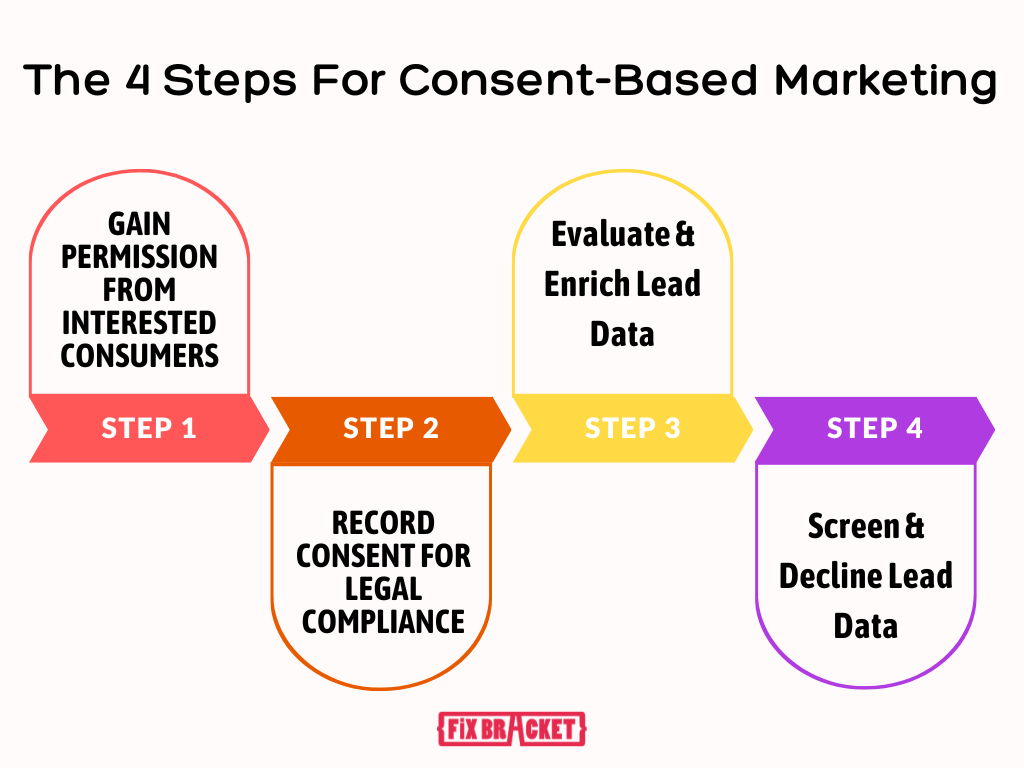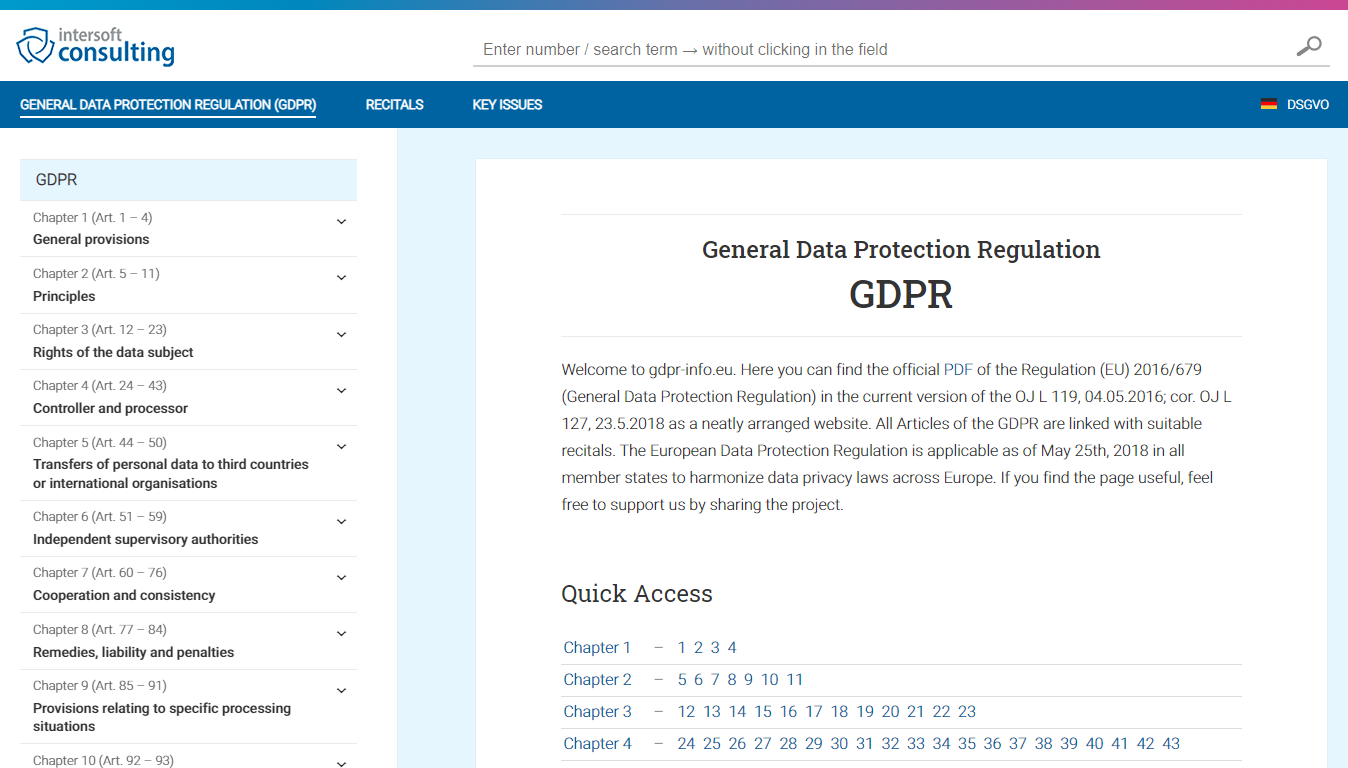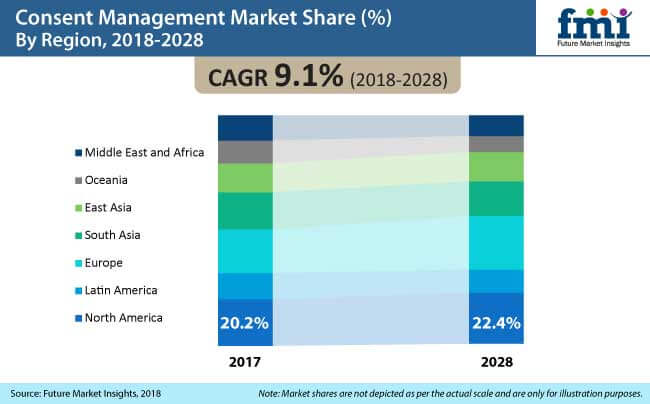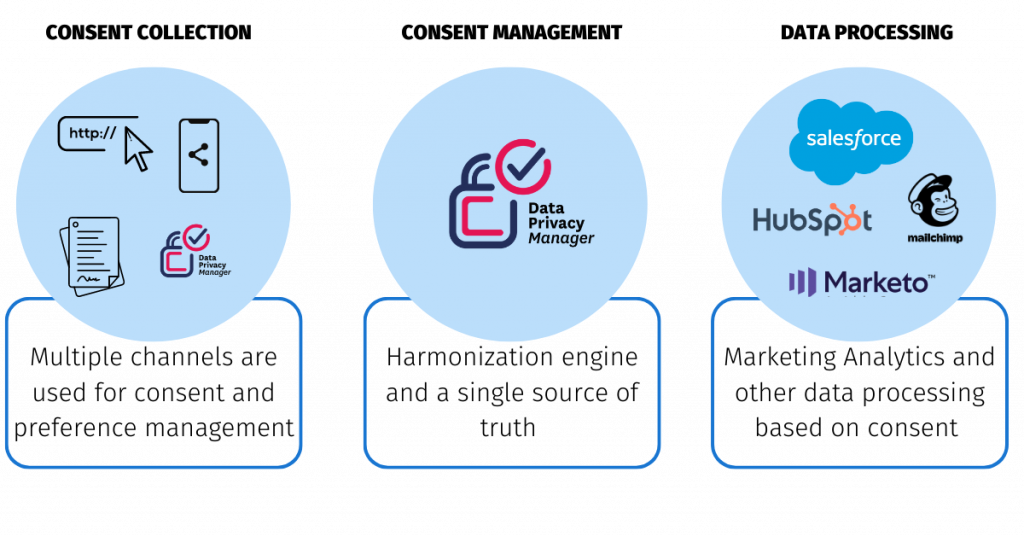What Is Consent-Based Marketing? and why is it important.

Welcome to the world of marketing, where strategies change to meet what consumers want and what’s legally sound. In this mix, consent-based marketing shines as a symbol of transparency and respect. Among various marketing types—from traditional methods to content and influencer marketing—consent-based marketing takes the spotlight.
It’s not just a strategy; it’s a philosophy valuing people’s autonomy in online interactions. In our digital world, where personalization is key, getting consent is crucial. This ensures marketing isn’t pushy but something the audience welcomes.
Join us on a journey into the nuanced world of consent-based marketing, where the power is in acknowledgment. It’s a conversation between brands and consumers where everyone actively engages.
Explore the balance between promotion and permission and dive into a marketing style rooted in ethics. In this article, we will explore what consent-based marketing is, how it works, and several other factors surrounding it.
How Do Businesses Define Consent-Based Marketing?
Consent-based marketing means reaching out to people who’ve explicitly said it’s cool to hear from you. The goal is to connect with folks who are genuinely interested, making sure they’re the ones entering your marketing pipeline. The cool thing is, that you get to check if a prospect fits your requirements before reaching out.
Plus, when you’re working with marketing partners, you only shell out for the prospects that match your criteria, giving you a big edge over other marketing methods.
Consent-based marketing emerges as a strategic approach centered on building trust and respect between brands and consumers. At its core, this methodology hinges on obtaining explicit permission from individuals before engaging them with marketing messages.
Unlike traditional marketing approaches that often rely on broad targeting, consent-based marketing prioritizes the autonomy and preferences of the audience, creating a more personalized and ethical interaction.
How it Works:
In consent-based marketing, businesses seek permission from their target audience before delivering promotional content. This permission is not just a legal requirement; it’s a fundamental shift in mindset that acknowledges the value of the consumer’s time and attention, setting the stage for a more meaningful and mutually beneficial relationship.
Example in Action:
Consider an e-commerce platform implementing consent-driven marketing. Instead of bombarding users with unsolicited emails, they request permission to send personalized product recommendations based on the user’s preferences and browsing history. Users, having granted consent, receive tailored content that aligns with their interests, enhancing the overall shopping experience.
Key Takeaways:
- Trust Building in consent-based marketing focuses on respecting the audience’s autonomy.
- Personalization involves tailoring messages for a more relevant customer experience, fostering a stronger connection.
- Ethical Engagement occurs through obtaining explicit consent and enhancing businesses’ positive brand image.
- Mutual Benefit arises as directed marketing efforts maximize impact while minimizing intrusion, benefiting both businesses and consumers.
The 4-Step Process For Consent-Based Marketing

1. Gain Permission from Interested Consumers
Start by connecting with genuinely interested consumers. When someone shares their details in response to an offer, they kick off the conversation, marking the first step in a more extensive dialogue. This initial touch-point sets the tone for the broader interaction, making it more authentic and engaging.
2. Record Consent for Legal Compliance
Navigating the maze of marketing regulations becomes easier when you’ve got documented prior express written consent. Having this paperwork allows you to reach out to consumers through various channels, online and offline alike. It’s like having a legal green light to connect with your audience and share your offerings.
3. Evaluate & Enrich Lead Data
Once you’ve secured opt-in lead information with documented consent, it’s time to dive into the details provided by the consumer. This step not only helps you identify potential prospects but also lets you gauge if there’s an existing relationship or communication history with the customer. It’s about understanding your audience better and tailoring your approach.
4. Screen & Decline Lead Data
In the realm of leads, not every one of them is a gem. Some may be fishy, unreachable, duplicates, or just not up to par. To keep your pipeline clean, you need a system that can, in real-time, sift out any leads that don’t check all your qualifying boxes. Here’s the kicker: many cost-per-lead marketing partners won’t charge you for leads that get rejected in real-time, saving you both time and money.
With the right processes and technologies, consent-based marketing stands out as the go-to channel. It’s not just about acquiring customers; it’s about doing it efficiently and securely. This ensures that you connect with those who genuinely want to hear from your brand.
But why should marketers care about data privacy or consent?
People willingly share their info with companies they trust to keep it safe because, let’s be real, everyone loves a bit of personalization. It’s not just a legal dance—companies need your consent to jazz up their marketing game and make it all about you.
As the marketing world shifts from hoarding lots of random data to talking to people directly, marketers are on the lookout for ways to dial down the big-data obsession and find fresh, personalized ways to chat with customers who don’t feel creepy.
Why does it matter?
Well, besides keeping the suits in compliance, consent-driven marketing is like the superhero of strategies. It saves bucks, keeps the regulators happy, and, most importantly, builds a solid trust bridge with customers. Plus, the cool kids say that these days, folks care about data privacy when deciding who gets their virtual high-five.
What Role Does EU GDPR Play In This?

EU GDPR Home Page
In January 2023, the EU dropped a game-changer with the Meta ruling. Now, every digital marketing move needs a green light from users to play nice with European data protection rules (you know, the GDPR stuff). This makes consent-driven marketing the go-to, future-proof thing.
So, a lot of marketers have been riding the Meta wave—Facebook, Instagram, WhatsApp—for leads, retargeting, you name it. But with this EU ruling, it’s like the rulebook got flipped. Now, it’s all about getting users to say ‘yes, please’ before you can work your marketing magic.
Brace yourself for a whole new digital marketing era—where getting the nod from users takes the spotlight. This shift might shake up the usual marketing numbers, think lower conversion rates, and fewer leads in the pipeline.
So, grabbing permission the right way is a big deal because it turns data into gold for retargeting and snagging new users. It’s like a secret sauce for dishing up content that folks want.
Repercussions of GDPR
Now, check this out—Meta got hit with a hefty €390 million fine by the EU for sneaking user consent into their terms of service. It’s a loud wake-up call for marketers: relying too much on big tech for leads is like walking a tightrope. It’s risky, and in the long run, it might not be the smartest move.
In a nutshell, marketers gotta level up their game. With the rules changing and all, diving into strategies like consent-based marketing that play nice with data privacy laws is the way to go.
So how can you be GDPR-compliant?
Here’s a general checklist for being GDPR-compliant. It is recommended that you refer to official sources for more accurate information.
- Users gotta give the nod before any cookies or trackers kick into action (unless they’re those essential ones on the whitelist).
- You’ve got to let users pick and choose which cookie categories they’re cool with—no arm-twisting allowed.
- Consent should be freely given, with no sly nudges or pressure tactics.
- If users change their minds, withdrawing or switching up consent should be a breeze.
- Treat consents like precious legal docs—store them safe and sound.
- Remember to refresh consent at least once a year, or more often if local rules say so. Always double-check local data protection guidelines for the lowdown on compliance requirements.
Consent-Based Marketing vs Permission Marketing
Let’s talk about Consent-Based Marketing and Permission Marketing. They might seem like cousins, but trust me, they’re not the same. They play in different engagement leagues. Permission marketing kinda hides behind vague “permission” buried deep in privacy policies, and most folks don’t even notice.
Now, Consent-Based Marketing?
That’s a whole other game. It plays by the rules, like the Telephone Consumer Protection Act (TCPA) kind of rules. This means the consent has to be legit—clear, in your face, and given by the customer without any arm-twisting. It’s like saying, ‘Hey, we’re only sliding into your DMs because you said it’s cool.’ It’s all about showing customers that their nod means the world to the brand.
What Are The Benefits Of Consent-Based Marketing?
Alright, let’s break down why Consent-Based Marketing is the superhero of the marketing world when done right. Check out the perks:
Respecting Privacy:
So, privacy is a big deal, right? Consent-driven marketing gets that. It’s like a privacy champion, ensuring that your info is only used for what you signed up for. No surprises, no mess-ups. It keeps everyone’s trust intact, especially in a world where privacy concerns are making headlines.
Tailored Just for You:
Ever get ads that seem like they just ‘get’ you?
That’s the magic of Consent-Based Marketing. When you say ‘okay,’ businesses can create content that’s spot-on for your interests. It’s like having a personal shopper for online stuff. You get what you want, they get your attention—a win-win.
Engagement on Steroids:
Consent-driven marketing is all about building a connection. When you willingly say ‘I’m in,’ it’s like telling a brand, ‘Yeah, I like what you’re doing.’ That makes you more likely to stick around, engage, and become a superfan. It’s a two-way street where everyone feels valued.
Legal Safety Dance:
In a world where data laws are stricter than ever, Consent-Based Marketing is like a legal shield. It ensures businesses follow the rules, dodging fines and keeping their rep clean. Staying on the right side of the law means smoother sailing for the long haul.
Budget-Friendly Magic:
Say goodbye to wasting money on people who couldn’t care less. Consent-driven marketing is a smart budget buddy. By focusing on folks who want to hear from you, you save big on marketing costs. It’s like skipping the ads that make you roll your eyes and diving into content that you’re actually into. Everyone’s happy, and budgets breathe a sigh of relief.
So there you have it—Consent-Based Marketing isn’t just a trend; it’s a game-changer that respects your privacy, serves up what you love, and keeps the good vibes going.
What Are Consent Management Platforms (CMP)?
Consent Management Platform (CMP) is like your personal wizard for dealing with data and privacy rules, you know, like the GDPR, CCPA, or LGPD. You can see below how the consent management market share percentage is distributed by region to get an idea of how the trend follows.

Consent Management Market Share Percentage
(source: FMI)
So, what do CMPs do?
Consent Management Platforms (CMPs) are like the lifeguard for personal data—from the moment someone says ‘I’m in’ to when they say ‘I’m out.’ It helps you keep tabs on who’s opted in, track their data journey, and be a superhero in responding to their requests or preferences.
But here’s the twist—there are tons of CMPs out there, each with its style. It’s like picking the right tool for the job, especially when you’re dealing with stuff like websites, apps, CRM systems, or marketing platforms.
The magic doesn’t stop there. A CMP also lets you be the boss of all those notices and spreads them across all the places you collect consent.
In a nutshell, a CMP is like your data bodyguard. It helps you show off your compliance skills and keep things shipshape, proving you’ve got your data game on point, anytime, anywhere.

Consent Management Design Workflow
(source: Data Privacy Manager)
Alright, so when you get the thumbs-up from someone, you’ve gotta keep that gold—aka consent—in a super-secure vault. We call this place the consent repository. It’s like the ultimate HQ for all things ‘I’m cool with this.’ It’s a neat and tidy database where we keep everything safe and sound.
Now, there’s this superhero called the Consent Management Engine. Its job? Spotting folks who gave the nod and making sure their preferences are crystal clear. Think of it like a traffic cop but for consent.
Once our superhero does its thing, the consent management platform swoops in. It takes all those preferences and tucks them into the consent repository.
Why?
So that when someone asks, ‘Hey, did you get permission for this?’ we can proudly show that, yup, we’re playing by the rules.
This whole shebang—consent collected, preferences noted, and everything stored nicely—is what we sometimes call the ‘records of consent.’
And guess what?
Marketing engines use these records to make sure every message we send out is right up the alley of what people want. It’s like tailoring every text, email, or ad to fit what each person said ‘yes’ to. Simple, secure, and everyone’s happy!
How Do CMPs Work?
Let’s talk about a consent management platform—this thing should have your back from the first moment you step onto a website till you decide to take a step back. It’s like the superhero of website user lifecycles.
Step 1: Getting the Nod
So, imagine this: you’re on a website, and it’s like, ‘Hey, we’re collecting some data. Cool if we do?’ You get to decide, either a ‘Sure, why not?’ or a ‘No, thanks.’ The nitty-gritty details of what happens to your info should be laid out in the privacy policy. And how do they usually ask? Picture a pop-up box; you’ve probably seen one of those.
Step 2: Keeping Track
Once you’ve given your thumbs up, it’s time to make a note of it. A good consent management platform gives the website owner a backstage pass to check who said ‘yes’ and when. They need this info because websites can get audited for playing by the GDPR rules. Think of it like keeping a diary of who’s cool with what, when they changed their minds and all that jazz.
Step 3: User Power
Now, here’s the deal: you can change your mind anytime. Maybe you decide, ‘Hey, I don’t want my data hanging out here anymore.’ A solid consent management platform should let you do just that—whether it’s fixing up your info, hitting the delete button, or tweaking your consent settings. It’s your data, after all.
And here’s a fun fact: if you ask for it, the platform has to hand over all the info they have on you in a way that your computer can understand. It’s like getting a digital presentation of all your data, neatly wrapped and ready to go.
Do CMPs Benefit Consent-Based Marketing?
Consent Management Platforms (CMPs) are like the unsung heroes of consent-based marketing, and let me tell you, they’re game-changers. Picture this: you’re on a website, and suddenly a pop-up appears, asking if it’s cool to collect your data. That’s the CMP at work, ensuring you’re in the driver’s seat of your online privacy.
So, why are CMPs so crucial for consent-based marketing?
Well, first off, they’re the gatekeepers of that all-important ‘yes’ or ‘no’ when it comes to sharing your info. It’s not just about legal compliance; it’s about creating a relationship based on trust. When users feel in control of their data, they’re more likely to say ‘Sure, hit me with those personalized ads.’
CMPs excel in the art of transparency.
They lay out the nitty-gritty details in a language we can all understand—no legal jargon, just a straightforward ‘here’s what we’re doing with your data.’ This transparency builds trust, and trust, my friend, is the secret sauce of consent-based marketing.
Now, let me drop a real-world example on you. Imagine an online store that uses a CMP. When you land on their site, a friendly pop-up says, ‘Hey there! We use cookies to tailor your shopping experience. Cool if we do?’ You get to choose, and that choice is recorded in the CMP’s magical database. Now, the store owner can peek into that database and see who’s on board with the data sharing and who’s not. It’s not just about numbers; it’s about understanding their audience and delivering content that clicks.
But here’s the cool part: let’s say you shopped there a few months back and decided you’ve had enough of their cookies. A good CMP lets you change your mind. You can go in, tweak your settings, and maybe even ask for your data to be deleted. It’s your call. CMPs make consent dynamic, evolving with the user’s preferences.
In a nutshell, CMPs are the architects of a trustworthy and personalized user experience in the consent-based marketing game. They ensure users are heard, respected, and in control, all while helping businesses build lasting connections. It’s a win-win, and that’s why CMPs are the unsung heroes of the digital marketing world.
Wrapping up: what can we take away from this?
So, here we are, navigating the labyrinth of marketing strategies, where evolution is the name of the game. In this dynamic landscape, consent-based marketing emerges as a beacon, embodying transparency and respect amid various marketing types. From the traditional playbook to the realms of content and influencer marketing, consent-based marketing takes center stage.
But it’s not merely a strategy; it’s a philosophy, a nod to the significance of autonomy in our online interactions. In a digital realm obsessed with personalization, securing consent becomes the linchpin. It’s not about pushing marketing onto the audience; it’s about inviting them into the conversation.
Key takeaways encapsulate the essence of consent-based marketing—trust-building, personalization, ethical engagement, and mutual benefit. These principles stand as pillars, shaping a marketing approach that respects users’ privacy, fosters engagement, and adheres to legal standards.
And why should marketers care about data privacy or consent? In a world where personalization reigns supreme, consent is the key to unlocking a trove of valuable, usable data for retargeting and user acquisition.
So, marketers, it’s time to level up. Embrace consent-based marketing, not just as a trend but as a transformative force that respects privacy, delivers personalized content, and, above all, builds trust. It’s not just a strategy; it’s a game-changer that caters to what users want, legally and ethically, making consent-based marketing the unsung hero in the ever-evolving digital marketing narrative.
Key Takeaways:
Trust Building
Consent-based marketing hinges on respecting audience autonomy, and fostering trust through transparent interactions.
Personalization:
Tailoring content ensures a more engaging and relevant experience, strengthening the brand-consumer connection.
Ethical Engagement:
Obtaining explicit consent aligns businesses with ethical marketing practices, enhancing brand image positively.
Mutual Benefit:
Directed marketing efforts, based on consent, maximize impact while minimizing intrusion, creating a win-win for both businesses and consumers.




